Congress Terminal (1892) and the History of Chicago's “L”
Introduction
Text-to-speech Audio
Images
A train built for the Bicentennial in 1976, now part of CTA's Heritage Fleet
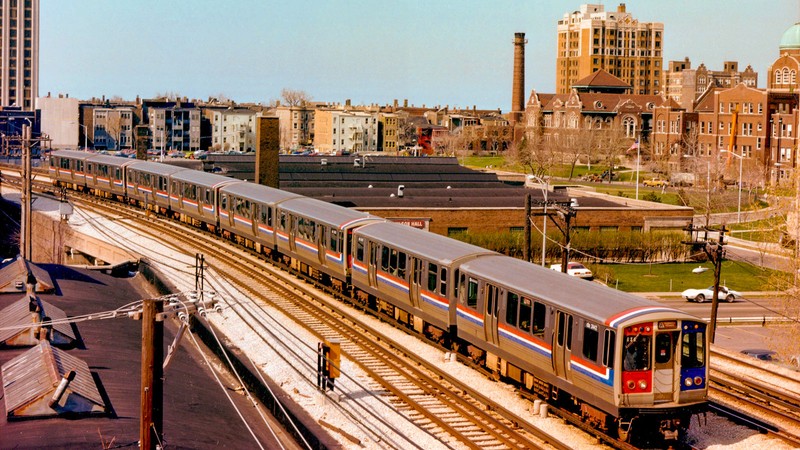
Construction of part of the Loop in 1895
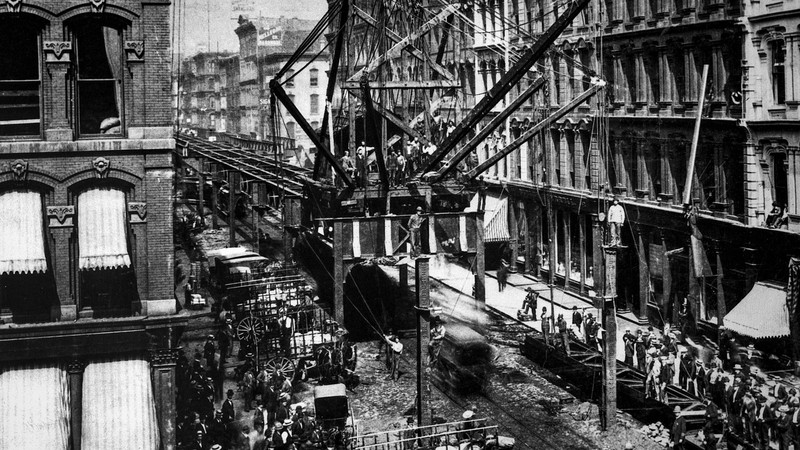
The first elevated trains, like the Lake Street #5 shown here, were run by steam engines.
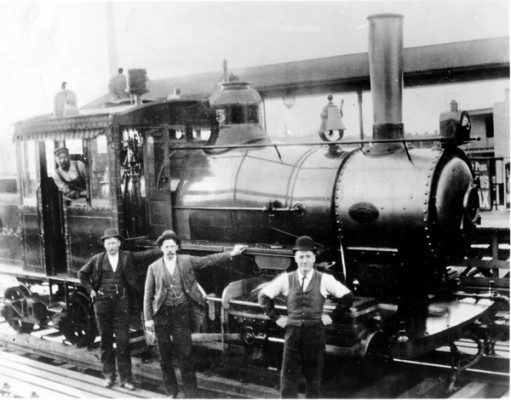
1924 view looking west at the Canal station
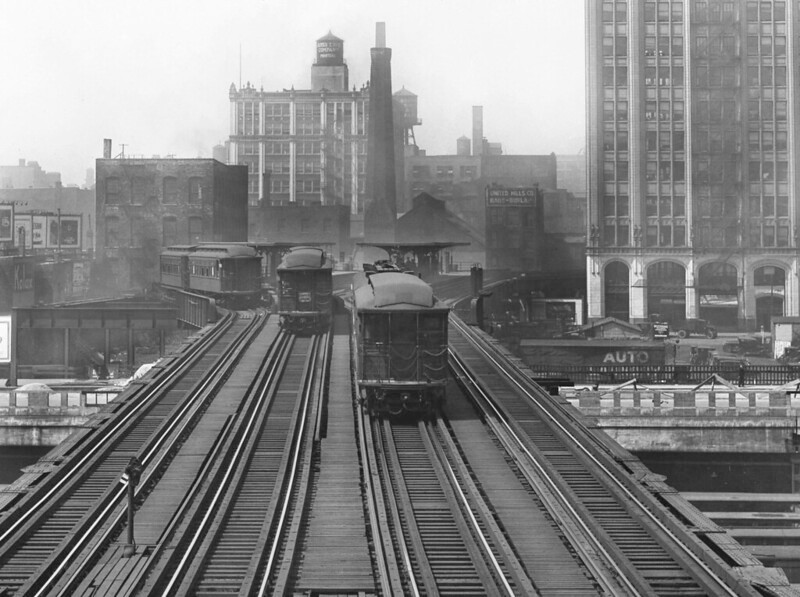
The first subway lines were constructed as part of the L system from 1938 to 1943.
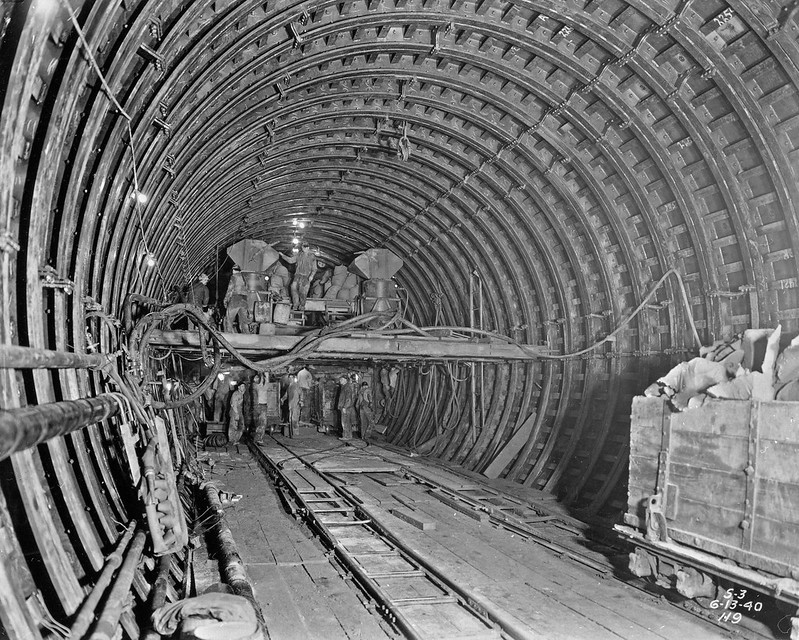
Inside one of the restored 1923 cars, now part of CTA's Heritage Fleet
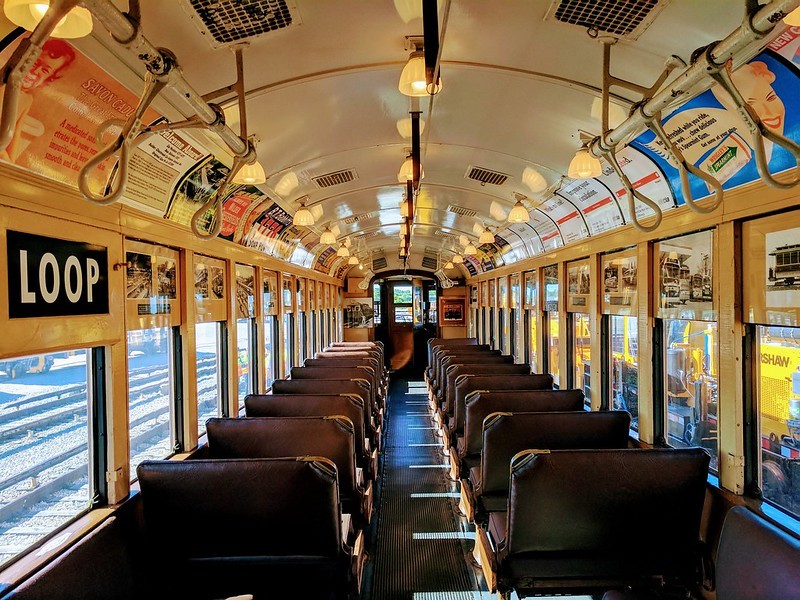
Backstory and Context
Text-to-speech Audio
Between 1830 and 1890, Chicago was the fastest-growing city in the world. Its population had surged over 1 million, and its geographic area also increased, spreading north, west, and south along the shores of Lake Michigan. Industrialization and urbanization posed unique challenges to the fledgling city. One of these problems was that Chicago’s streets were frequently jam-packed with buggies, carts, trolleys, horses, and pedestrians. Traffic congestion made the movement of goods and people no easy task. The tracks were elevated as a cheaper alternative to creating a subway system.
The first L train took its inaugural run on June 6, 1892. The journey between Pershing Street and Congress Terminal (located at Holden Court) was 3.6 miles long, took 14 minutes, and cost five cents. The route was called the Chicago and South Side Rapid Transit Railroad, and it originally used a steam-powered engine. (It is now part of the Green Line.) After the success of electric cars set up to transport visitors to city for the World’s Columbian Exposition in 1893, Chicagoans adopted an electrified system of public transport. Two more routes, the Lake Street Elevated and Metropolitan West Side Elevated, were quickly constructed over the next two years. The riveted steel-structured Union Loop through the downtown business district was completed in 1897. It is estimated that construction cost around $500,000 to $1 million per mile at the time (about $15 million to $30 million adjusted for inflation in 2020).
The public reaction to the L was not always positive. The open-air tracks create a constant, rumbling noise that was disparaged early on by residents; it was even blamed for inhibiting the proper growth and development of children. The tracks posed dangers like possible electrocution, and there were also fears of structural collapse. These concerns could not stop the new system from growing though; it was simply too convenient. The L now connected many of Chicago’s neighborhoods to downtown and back again at record speeds. The fourth line, Northwestern Elevated, was completed in 1900 and connected to the Loop. In 1914, the first steel cars replaced the original wooden cars. By 1926, L ridership was up to 229 million, but then fell during the Great Depression. The first underground subways in the system were constructed between 1938 and 1943 (now part of the Red Line).
Chicago Transit Authority (CTA) was established in 1945 in order to unify the various companies that ran the trains and streetcars under one entity. The 1950s and 60s saw the last wooden cars retired in favor of new cars that featured air-conditioning. (At the same time, the last of Chicago’s streetcars were taken out of commission.) As the old cars were retired, some were preserved as part of the CTA’s Heritage Fleet program. This collection of cars, dating from 1923 to 1978, is maintained by volunteers and brought out for special charters and events.
Today, the CTA system is the largest in the US after New York City and is steadily expanding. The L now consists of eight lines and serves over three-quarters of a million people on a typical day. The tracks span a total of 224 miles with 145 stations. A five-mile expansion of the Red Line into underserved portions of South Chicago is expected to be open for service in 2026. The L remains the only elevated metro system in a downtown US city and has become an iconic representation of Chicago, frequently depicted in movies and TV shows set in the city. Writer and native Chicagoan Nelson Algren referred to it “the city’s rusty heart.”
Cite This Entry
Admin, Clio and Jamie Nickel. "Congress Terminal (1892) and the History of Chicago's “L”." Clio: Your Guide to History. July 7, 2020. Accessed April 2, 2025. https://theclio.com/entry/108720
Sources
Blumberg, Nick. “Long-Awaited CTA Red Line Extension Moves Forward with New $38M Contract.” WTTW News. February 10, 2020. Accessed July 2, 2020. https://news.wttw.com/2020/02/10/long-awaited-cta-red-line-extension-moves-forward-new-38m-contract.
“The Chicago L.” Chicago Architecture Center. Accessed July 2, 2020. http://www.architecture.org/learn/resources/buildings-of-chicago/building/the-chicago-l/.
“Congress Terminal.” Chicago-L.org. Accessed July 2, 2020. http://www.chicago-l.org/stations/congress_term.html.
“Heritage Fleet.” Chicago Transit Authority. Accessed July 2, 2020. https://www.transitchicago.com/heritagefleet/.
Lewis, Russell. “Forward.” The Chicago "L." Greg Borzo, author. Arcadia Publishing: Chicago, IL, 2007.
“Then and Now: A Brief History of the Chicago ‘L’.” Chicago Loop Alliance Foundation. Accessed July 2, 2020. https://loopchicago.com/in-the-loop/then-and-now-a-brief-history-of-the-chicago-l/.
Chicago Transit Authority: https://interactive.wttw.com/chicago-by-l/sidetracks/history-l
Chicago Transit Authority: https://interactive.wttw.com/chicago-by-l/sidetracks/history-l
Chicago Transit Authority: https://www.chicagomag.com/Chicago-Magazine/The-312/May-2012/Vintage-CTA-Photos-A-Brief-Visual-History-of-Our-El-Cars/index.php?cp=1&si=0&requiressl=true#galleryanc
Chicago Transit Authority: https://www.flickr.com/photos/ctaweb
Chicago Transit Authority: https://www.flickr.com/photos/ctaweb
Chicago Transit Authority: https://www.flickr.com/photos/ctaweb

